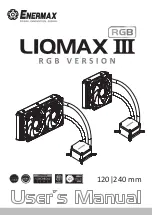
2.
Auto-reload timer operation
Setting bit TMC7 in TMC to 1 causes timer C to function as an 8-bit auto-reload timer. When a
reload value is set in TLC, the same value is loaded into TCC, becoming the value from which TCC
starts its count.
After the count value in TCC reaches H'FF (H'00), the next clock signal input causes timer C to
overflow/underflow. The TLC value is then loaded into TCC, and the count continues from that
value. The overflow/underflow period can be set within a range from 1 to 256 input clocks,
depending on the TLC value.
The clock sources, up/down control, and interrupts in auto-reload mode are the same as in interval
mode.
In auto-reload mode (TMC7 = 1), when a new value is set in TLC, the TLC value is also set in
TCC.
3.
Event counter operation
Timer C can operate as an event counter, counting rising or falling edges of an external event signal
input at pin TMIC. External event counting is selected by setting bits TMC2 to TMC0 in timer
mode register C to all 1s (111).
When timer C is used to count external event input, , bit IRQ2 in PMR1 should be set to 1 and bit
IEN2 in IENR1 cleared to 0 to disable interrupt IRQ
2
requests.
4.
TCC up/down control by hardware
With timer C, TCC up/down control can be performed by UD pin input. When bit TMC6 is set to 1
in TMC, TCC functions as an up-counter when UD pin input is high, and as a down-counter when
low.
When using UD pin input, set bit UD to 1 in PMR3.
190















































